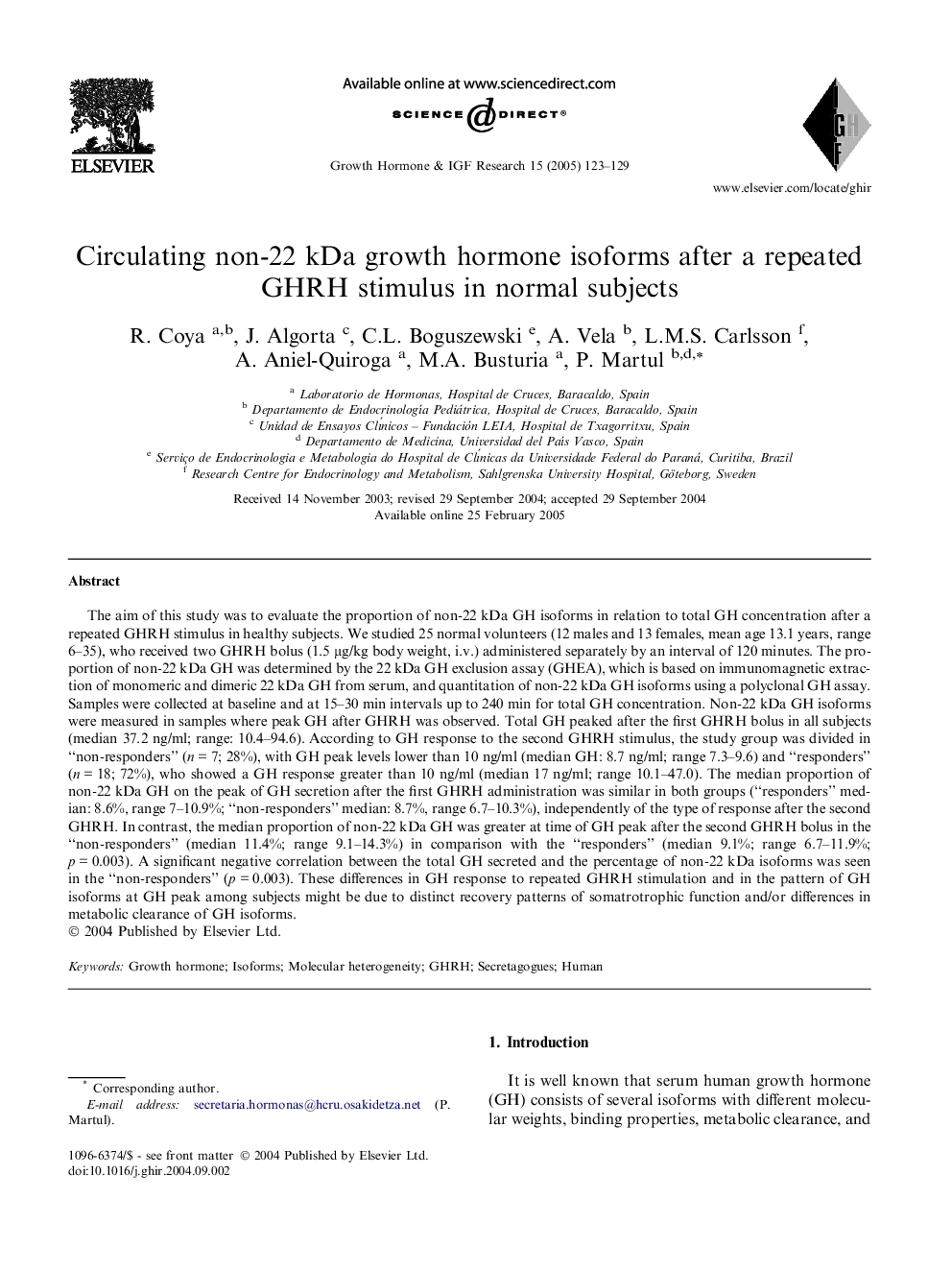| Article ID | Journal | Published Year | Pages | File Type |
|---|---|---|---|---|
| 9114929 | Growth Hormone & IGF Research | 2005 | 7 Pages |
Abstract
The aim of this study was to evaluate the proportion of non-22 kDa GH isoforms in relation to total GH concentration after a repeated GHRH stimulus in healthy subjects. We studied 25 normal volunteers (12 males and 13 females, mean age 13.1 years, range 6-35), who received two GHRH bolus (1.5 μg/kg body weight, i.v.) administered separately by an interval of 120 minutes. The proportion of non-22 kDa GH was determined by the 22 kDa GH exclusion assay (GHEA), which is based on immunomagnetic extraction of monomeric and dimeric 22 kDa GH from serum, and quantitation of non-22 kDa GH isoforms using a polyclonal GH assay. Samples were collected at baseline and at 15-30 min intervals up to 240 min for total GH concentration. Non-22 kDa GH isoforms were measured in samples where peak GH after GHRH was observed. Total GH peaked after the first GHRH bolus in all subjects (median 37.2 ng/ml; range: 10.4-94.6). According to GH response to the second GHRH stimulus, the study group was divided in “non-responders” (n = 7; 28%), with GH peak levels lower than 10 ng/ml (median GH: 8.7 ng/ml; range 7.3-9.6) and “responders” (n = 18; 72%), who showed a GH response greater than 10 ng/ml (median 17 ng/ml; range 10.1-47.0). The median proportion of non-22 kDa GH on the peak of GH secretion after the first GHRH administration was similar in both groups (“responders” median: 8.6%, range 7-10.9%; “non-responders” median: 8.7%, range 6.7-10.3%), independently of the type of response after the second GHRH. In contrast, the median proportion of non-22 kDa GH was greater at time of GH peak after the second GHRH bolus in the “non-responders” (median 11.4%; range 9.1-14.3%) in comparison with the “responders” (median 9.1%; range 6.7-11.9%; p = 0.003). A significant negative correlation between the total GH secreted and the percentage of non-22 kDa isoforms was seen in the “non-responders” (p = 0.003). These differences in GH response to repeated GHRH stimulation and in the pattern of GH isoforms at GH peak among subjects might be due to distinct recovery patterns of somatrotrophic function and/or differences in metabolic clearance of GH isoforms.
Related Topics
Life Sciences
Biochemistry, Genetics and Molecular Biology
Endocrinology
Authors
R. Coya, J. Algorta, C.L. Boguszewski, A. Vela, L.M.S. Carlsson, A. Aniel-Quiroga, M.A. Busturia, P. Martul,
